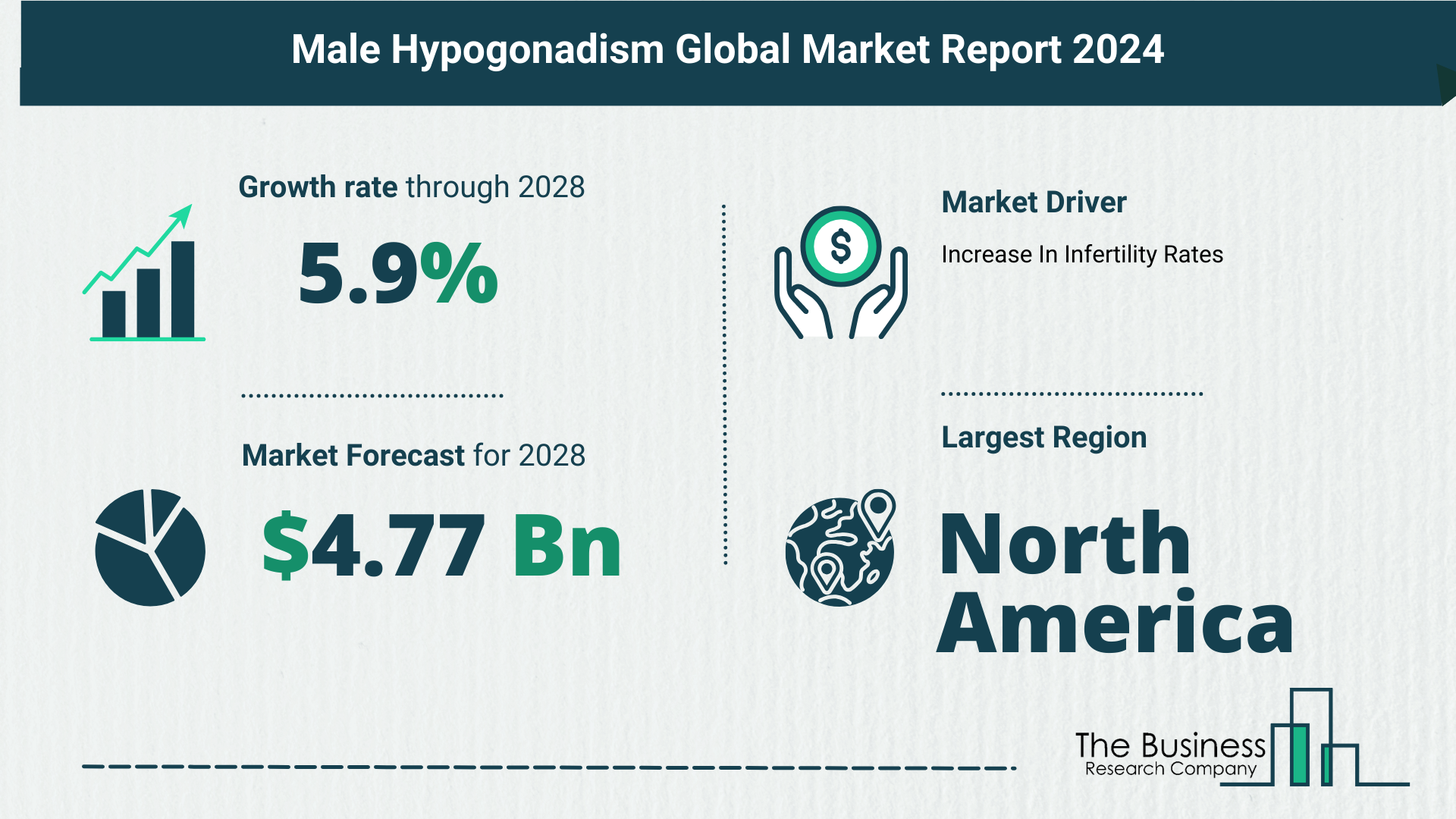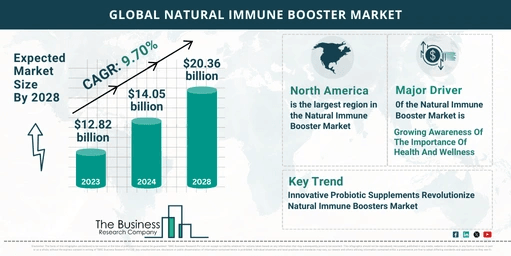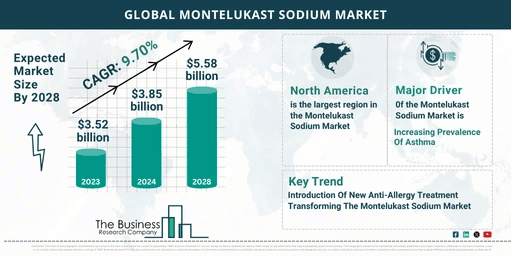Growth Trajectory Of The Male Hypogonadism Market 2024-2033
The Business Research Company’s global market reports are now updated with the latest market sizing information for the year 2024 and forecasted to 2033
Market Expansion and Evolution
- The male hypogonadism market has witnessed robust growth, escalating from $3.55 billion in 2023 to $3.8 billion in 2024, with a commendable CAGR of 6.8%.
- The historic growth trajectory owes its momentum to an aging population, increased awareness, lifestyle factors, chronic illnesses, and evolving treatment-seeking behaviors.
- Future projections indicate continued strong growth, with the market anticipated to reach $4.77 billion by 2028, driven by rising awareness, lifestyle-related conditions, therapy innovations, and a focus on men’s health.
Unveiling the Driving Forces: Rising Infertility Rates
- The surge in infertility rates acts as a catalyst for male hypogonadism market growth.
- Male hypogonadism, contributing to decreased sperm production and infertility, emerges as a significant factor in male infertility.
- Reports from institutions like the NIH and the Libyan Journal of Medical Sciences highlight escalating male infertility rates, propelling the male hypogonadism market forward.
View More On The Male Hypogonadism Market Report 2024 – https://www.thebusinessresearchcompany.com/report/male-hypogonadism-global-market-report
Innovative Products Redefining Treatment Paradigms
- Major companies in the male hypogonadism market are pioneering innovative products, including digital-forward platforms and telemedicine solutions.
- Platforms like Base Healthcare’s men’s virtual health platform offer subscription-based access to virtual health services, oral testosterone treatment, and personalized health guidance.
- Strategic acquisitions, such as Gruenenthal’s acquisition of Nebido from Bayer AG, bolster product portfolios and pave the way for research and development in male hypogonadism treatment.
Market Segmentation: Insights and Dynamics
- The male hypogonadism market segmentation includes types such as Klinefelter’s syndrome, Kallmann syndrome, pituitary disorders, and others.
- Drug delivery methods encompass topical gels, injectables, transdermal patches, and other innovative drug delivery systems.
- Therapies like testosterone therapy and gonadotropin-releasing hormone therapy offer diverse treatment options for patients.
Regional Dynamics: Market Expansion and Growth Prospects
- North America emerges as the dominant region in the male hypogonadism market in 2023, reflecting significant market share.
- Asia-Pacific stands out as the fastest-growing region, driven by technological advancements, rising healthcare awareness, and expanding patient populations.
Conclusion: Pioneering Advances in Men’s Health
The male hypogonadism market continues to evolve, fueled by rising infertility rates, innovative product developments, and a growing emphasis on men’s health. As awareness spreads and treatment options expand, stakeholders across the healthcare spectrum play a pivotal role in shaping the market’s trajectory. With a focus on long-term safety, treatment efficacy, and patient well-being, the male hypogonadism market stands poised for continued growth and innovation. Collaborative efforts, strategic acquisitions, and advancements in telemedicine herald a new era of accessible and personalized care for individuals affected by male hypogonadism. As the market journey unfolds, stakeholders navigate a landscape ripe with opportunities to revolutionize men’s health and transform lives through innovative treatment modalities and patient-centric care.
Request A Sample Of The Global Male Hypogonadism Market Report 2024:
https://www.thebusinessresearchcompany.com/sample_request?id=9969&type=smp



